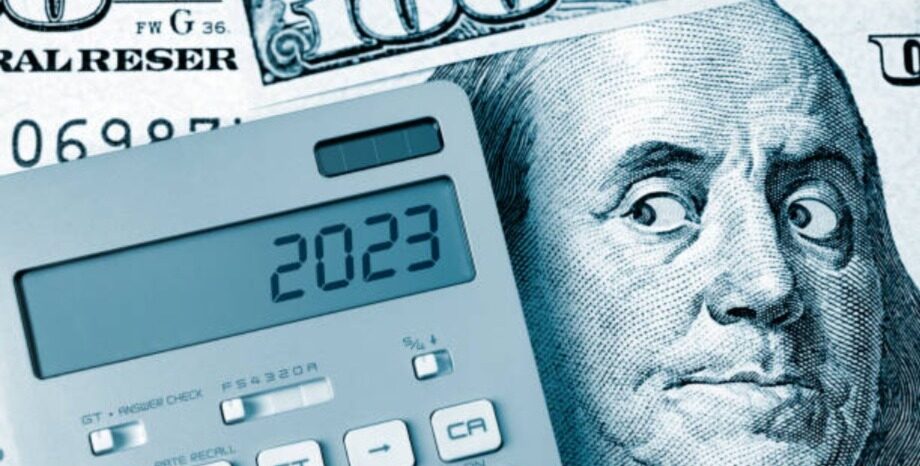Key Insights
- Democrats and Republicans failed to reach a consensus during negotiations over the increase in the US national debt ceiling in 2023.
- Politicians have less and less time to solve this problem – the money may run out as early as June 1, warns the US Treasury.
- The debt ceiling will eventually be raised, and the US will not face a default, but as the “deadline” approaches, market volatility may increase, experts say. What prevents Democrats and Republicans from reaching an agreement?
What’s happened
On Tuesday, May 9, 2023, in the Oval Office of the White House, US President Joe Biden and senior congressmen, including Speaker of the House of Representatives, Republican Kevin McCarthy, negotiated for about an hour on one of the most pressing issues facing the US authorities – raising the ceiling of the state debt. Negotiations have not led to tangible progress – Republicans continue to demand a sharp reduction in public spending in exchange for an increase in the national debt ceiling, while Democrats, led by the president, insist that the debt limit be raised without preconditions.
There will be a lot of “posturing and political games” in the coming days and weeks, Biden warned at a press conference following the talks, but at the same time assured that the US would not allow a default. “Default is not an option. America is solvent. We pay our bills, and default prevention is the main responsibility of Congress, ” the President of the United States emphasized.
Politicians have less and less time to reach an agreement. Last week, US Treasury Secretary Janet Yellen said that the US could run out of money to pay its obligations as early as June 1 this year if Congress does not raise the national debt ceiling. She urged policymakers to act “as soon as possible” to resolve the issue, and warned that the absence of a decision on the debt ceiling could spark a crisis with implications for financial markets and interest rates.
What is the debt ceiling?
You may wonder, what is the US debt ceiling? Well, most of the expenses of the US authorities are financed by loans, issuing debt securities – Treasury bonds.
Among the obligations of the US government that debt financing helps to fulfill are the payment of tax refunds, the salaries of the military, the operation of social and health insurance programs, and the interest payments on existing debt.
Nearly a century ago, in 1917, when the United States entered World War I, Congress set a borrowing ceiling for the first time—a limit on the issuance of war bonds. Since the US government usually spends more than it receives in taxes and fees, the budget runs into a deficit, which means you need to borrow more and raise the national debt ceiling. This has only happened since 1960.78 times.
Now the national debt limit is $31.4 trillion – more than 123% of annual GDP. If the borrowing ceiling is not raised, the Treasury will no longer be able to issue Treasury bonds, and the authorities will be forced to finance spending only from incoming revenues and cash balances.
As a result, at some point the government will not be able to pay its obligations, for example, to pay coupons on government bonds, which will lead to a technical default.
Despite the fact that the United States has never faced a default in history, in recent years the issue of raising the borrowing ceiling has been a field for fierce discussions between Republicans and Democrats. For example, in 2011, it was possible to agree on raising the debt limit only three days before the “deadline”.
Doubts about the creditworthiness of the world’s largest economy then led the S&P rating agency to downgrade the US credit rating by one notch for the only time in history – from the highest AAA to AA +, and the S&P 500 broad market index fell 17% in two weeks. In the end, a compromise was reached only when the presidential administration agreed to cut defense and other spending.
This time, the situation may repeat itself – disagreements in Congress could lead the United States to default and downgrade the credit rating, said Sushil Wadwani, adviser to the head of the British Treasury, Jeremy Hunt. “This time, it will take significant market turbulence for these people to agree among themselves,” he ironically.
Why the US debt ceiling cannot be raised now
The last time the United States debt ceiling was raised in 2021, then the whole issue was resolved by a simple vote – the required number of votes on the relevant bill was collected. The process was quick and painless, as the majority in the House of Representatives and in the Senate was for the Democrats.
However, now the situation is different. In the last party election, the Republicans won a majority in the House of Representatives, while the Democrats continue to control the Senate. A similar scenario was also implemented in 2011.
In April, the Republicans put forward their bill to raise the US national debt ceiling. It involves raising the ceiling by $1.5 trillion, but provides for spending cuts by $4.5 trillion and limiting government spending growth to no more than 1% per year. The bill passed the House of Representatives but was not approved by the Democrats.
Republicans in the House of Representatives should remove default from discussion and resolve the issue of limiting the national debt ceiling without requirements and conditions, the White House said at the time.
After that, the leaders of the Democrats and Republicans discussed the issue of raising the national debt only once – on May 9. It was not possible to reach a consensus, but Biden noted that politicians have time to solve this problem.
As Biden noted at a press conference, he may have to postpone his next trip to a meeting of G7 leaders to resolve the issue of the national debt ceiling.
US default debt ceiling: What are the risks?
Despite the fact that politicians have less and less time to reach an agreement, investors are still full of optimism. In particular, management company Janus Henderson this week estimated the probability of default on treasury bonds at less than 1%. As of May 3, MSCI Research calculated that the probability of default was 3.9%.
Analysts base their estimates on one-year credit default swap (CDS) spreads. A CDS is a contract that insures an investor in debt securities against a possible default from the issuer, and a CDS spread is the “premium” that the buyer of the swap is willing to pay to the seller in exchange for insurance.
At the same time, MSCI analysts note that the probability of a default is twice as high as two months earlier, and 10 times higher than at the beginning of the year.
How Bloomberg points out that the instrument already reflects speculative sentiment – insurance against default on one-year CDS on US bonds is more expensive than on bonds of Brazil or Mexico.
So far, the yields of the shortest securities maturing in early June – that is, by the time the US may have exhausted the resources to pay the bills – suggest that the market is pricing in a four to five-day delay in payments, Scott Skyrm, an analyst at Curvature Securities estimated.
In other words, investors expect to be paid, but not necessarily on time. However, formally, even a slight delay in payments would mean a technical default.
If politicians still fail to reach a consensus and the US faces a default, then “a crisis will break out, characterized by a sharp jump in interest rates and falling stock prices,” said Mark Zandi, chief economist at Moody’s Analytics.
If the US fails to pay its obligations for a sufficiently long time, that is, it faces a “protracted default”, GDP will decrease by 6.1%, and unemployment will rise by 5%, the White House Council of Economic Advisers warns. As a result, the US economy will be hit harder than during the last financial crises of 2008 and 2020.
How will the debt ceiling affect the stock market in 2023?
In anticipation of the decision to increase public debt in the financial markets, volatility will increase. Now the market is rather ignoring the problem with the increase in public debt.
Even though the Democrats and Republicans failed to move forward in the talks on raising the national debt on May 9, the movements of the S&P 500 index turned out to be insignificant.
Portfolio manager and partner of Briaud Financial Advisors Matthew McKay notes that strong movements in the markets traditionally occur two weeks before the resolution of the issue with the increase in public debt.
“The next few weeks will be full of news and signals for the stock markets,” he predicts.
On fears of an increase in public debt, stock markets may fall significantly, after which their recovery will last for more than one month, Valery Yemelyanov, an expert on the stock market at BCS Mir Investments, believes. However, he notes that a drop in the scale of 2011 is hardly possible.
Then it was the first such crisis, and now there are already well-established negotiation mechanisms. With each subsequent budget mini-crisis, the indices reacted weaker and weaker. This year, the reaction may turn out to be very short-term, explains the expert.
Stephen Ethan, market analyst at MarketsXplora, predicts that the S&P 500 index may drop to 3,800 points on fears of a national debt ceiling (as of May 10, it is trading at 4,120 points).



Hello.This article was extremely motivating, particularly because I was looking for thoughts on this issue last week.
Have you ever considered about including a little bit more than just your articles? I mean, what you say is important and all. However imagine if you added some great visuals or video clips to give your posts more, “pop”! Your content is excellent but with pics and clips, this blog could undeniably be one of the best in its field. Awesome blog!